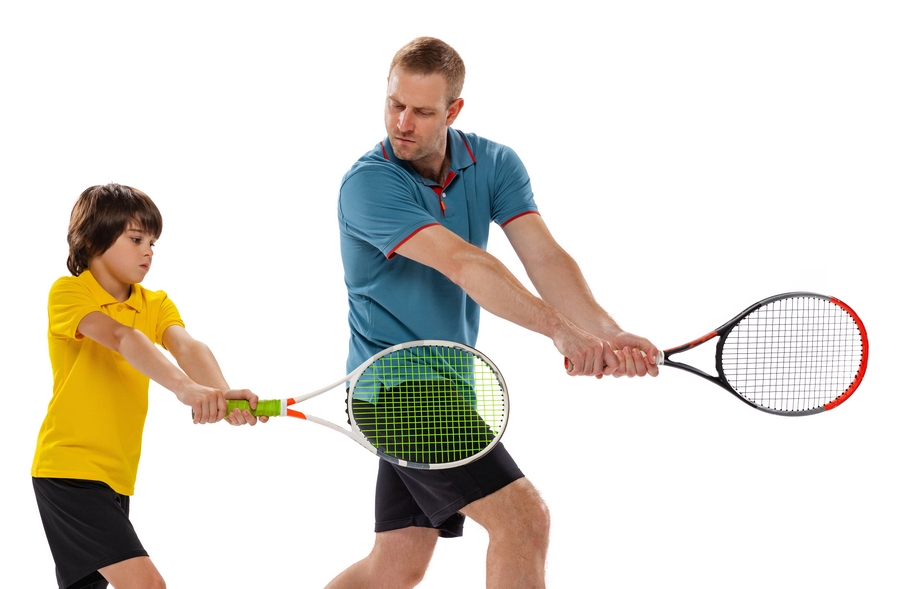The Importance of a Tennis Warm-Up Routine with Dynamic Stretching
July 9, 2024
Introduction: Warming up before a tennis match or practice session is essential for optimizing performance and preventing injuries. A proper warm-up routine that includes dynamic stretching prepares the body for the physical demands of tennis, enhancing flexibility, increasing blood flow, and improving overall readiness. This article explores the importance of incorporating dynamic stretching into your tennis warm-up routine.
1. Enhances Performance: Dynamic stretching involves active movements that take your muscles and joints through their full range of motion. This type of stretching is particularly beneficial for tennis players because it:
- Increases Blood Flow: Dynamic movements increase heart rate and blood flow to the muscles, ensuring they are well-oxygenated and ready for intense activity.
- Improves Muscle Activation: Engaging in dynamic stretches activates the muscles you'll use during play, enhancing your performance on the court.
- Boosts Coordination and Agility: Dynamic stretches often mimic the movements you'll perform during a match, helping to improve your coordination and agility.
2. Reduces the Risk of Injury: In tennis, the rapid changes in direction, explosive movements, and repetitive actions can put significant strain on the muscles and joints. A dynamic stretching routine helps to:
- Increase Flexibility: By stretching your muscles and tendons through their full range of motion, dynamic stretching enhances flexibility, making it easier for your body to handle the physical demands of tennis.
- Prepare Joints for Activity: Dynamic stretches help to lubricate the joints, reducing the risk of strains and sprains.
- Warm-Up Tendons and Ligaments: Properly warmed-up tendons and ligaments are less likely to tear or become injured during play.
3. Promotes Mental Readiness: A good warm-up routine is not just about physical preparation; it also helps to get you mentally ready for the match. Dynamic stretching can:
- Increase Focus: Engaging in a structured warm-up routine helps you to concentrate on the upcoming match, improving your mental clarity.
- Reduce Anxiety: The familiar motions of your warm-up can help to calm pre-match nerves, putting you in a better mental state to compete.
4. Examples of Dynamic Stretches for Tennis: To maximize the benefits of dynamic stretching, include movements that target key muscle groups and mimic tennis movements. Here are some effective dynamic stretches:
- Leg Swings: Swing one leg forward and backward, then side to side, to loosen up the hip flexors and hamstrings.
- Arm Circles: Perform large and small circles with your arms to warm up the shoulders and upper body.
- Torso Twists: Rotate your torso from side to side to activate the core muscles and improve rotational flexibility.
- Walking Lunges: Step forward into a lunge position, alternating legs, to stretch the hip flexors, quadriceps, and hamstrings.
- Butt Kicks: Jog in place while kicking your heels towards your glutes to warm up the hamstrings and improve running mechanics.
5. Integrating Dynamic Stretching into Your Routine: For an effective warm-up, combine dynamic stretching with other warm-up activities. A comprehensive warm-up routine might include:
- Light Cardiovascular Exercise: Start with 5-10 minutes of light jogging or jumping rope to increase your heart rate.
- Dynamic Stretching: Spend 10-15 minutes performing dynamic stretches, focusing on the major muscle groups used in tennis.
- Tennis-Specific Drills: Finish with some tennis-specific drills, such as shadowing groundstrokes or serving practice, to further prepare your body for the match.
Conclusion: Incorporating dynamic stretching into your tennis warm-up routine is crucial for enhancing performance, reducing the risk of injury, and preparing mentally for the match. By spending a few minutes engaging in active, dynamic movements, you can ensure that your body is fully prepared to handle the demands of tennis, allowing you to play your best and stay injury-free.







